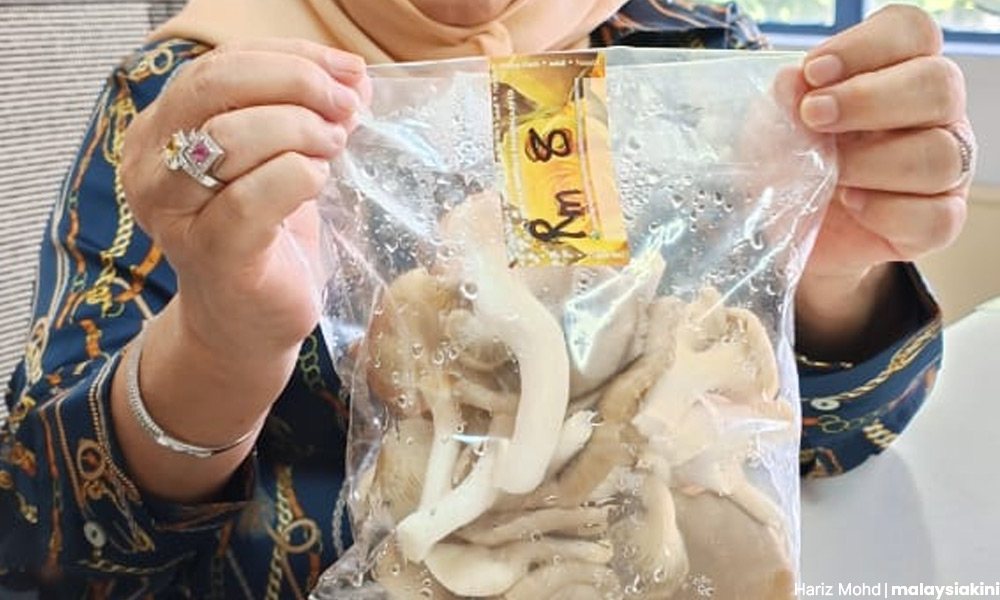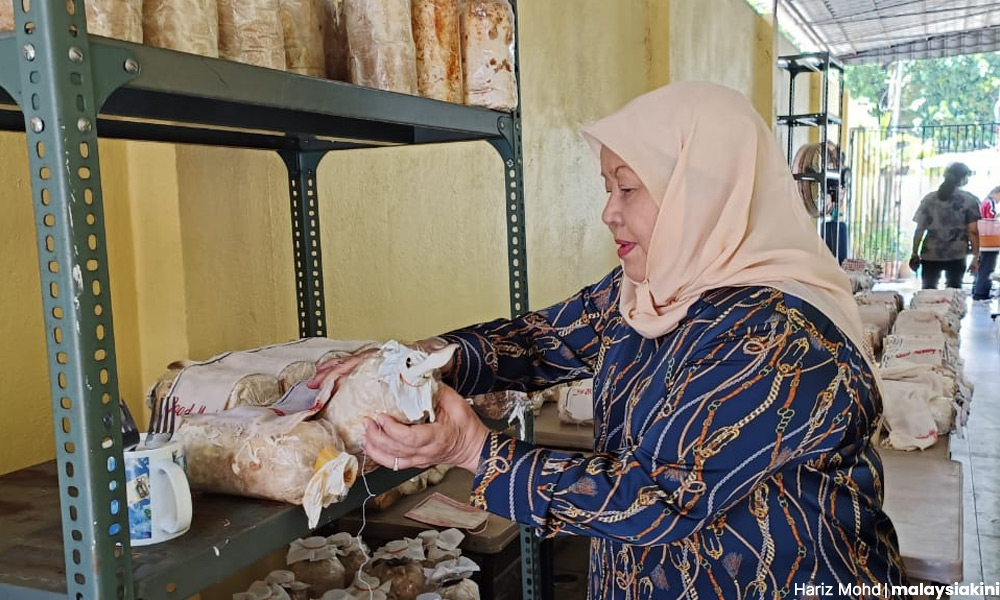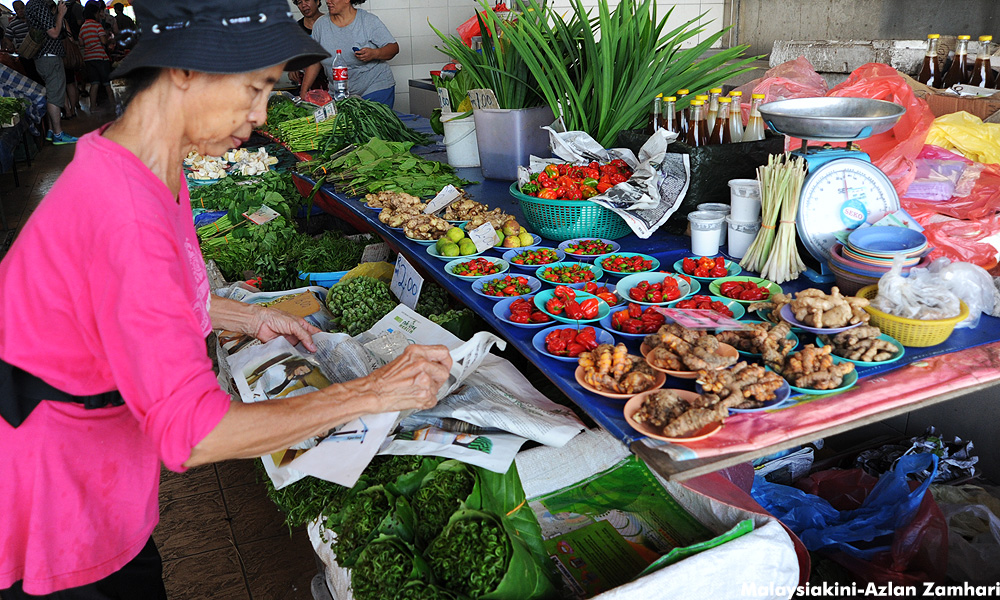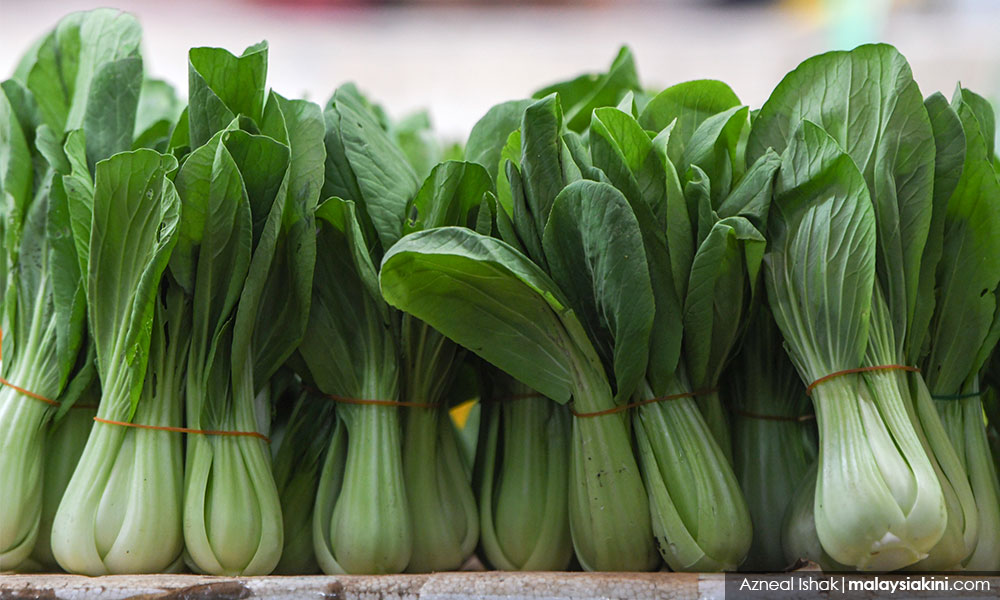As food insecurity and economic downturn hit the country, many have thrown in suggestions on measures the government and rakyat can take to address the problems, one of them being - urban farming.
Some have touted urban farming as an approach akin to 'killing two birds with one stone' where it can increase the country's crop production while simultaneously helping urbanites earn extra income.
But, is the idea really viable? Malaysiakini spoke to several individuals who run urban farms for their take.
'Everybody can do it'
Zaiton Rahim, the president of a charity organisation that focuses on helping mentally handicapped persons, believes that urban farming is something that the people, especially urbanites, can take up.
Speaking from experience, she said the Selangor and Federal Territory Association for the Mentally Handicapped (SAMH) had initiated urban farming at their three schools in Kuala Lumpur and Selangor as a means to educate students and at the same time, raise money to fund its operation.
Its most recent project was at SAMH headquarters in Brickfields, an old building tucked in the middle of the busy urban area.
In its small garden, the school grows 45 chilli trees, 25 brinjal trees, six hydroponic sets for Brazilian spinach, and 200 oyster mushroom blocks.

Since they started planting in March, SAMH Brickfields has managed to grow a substantial amount of vegetables, some of which they use to cook students' lunches while the rest were sold.
"Several days ago, we harvested 15kg of chilli. This was our first harvest since SAMH started our urban farm in March.
"Besides chilli, we have harvested brinjal 13 times so far, between 1-2kg each time. There is also Brazilian spinach, which we grow using the hydroponic system, and mushrooms," she told Malaysiakini in an interview recently.
Zaiton said the school has managed to raise some RM2,000 from selling the vegetables so far. The crops were sold in small packets mainly to parents of SAMH students.

Relatively low cost
Cost-wise, Zaiton said SAMH spent about RM400 for their chilli and brinjal projects, plus another RM400 to build an automatic machine to water the crop every four hours, while each mushroom block costs about RM1.80.
The most expensive piece of equipment they use on the farm would be the hydroponic system, which costs around RM1,200 per set. SAMH has a total of six sets sponsored by several donors.
"I believe urban farming can help us economically. Because now we do not even have to use pots, only polybags. They do not require as much in terms of costs. We can even do it on our own balcony.
"The easiest would be mushrooms. We need a rack, water and air, and then only monitor the temperature. It is also the quickest to get a return for our investment because we can harvest mushrooms every one month, while chillies require three," she added.

Growing the plants also does not require much training or taking up a course, Zaitun said, and those interested can even learn from YouTube to start their own farm.
'Not enough for substantial profit'
However, two other urban farmers believe that the activity would only be able to help individuals save some money but not enough for urbanites to make it a source of revenue.
Phang Sce Hwai, a culinary instructor who grows vegetables and herbs at her Petaling Jaya bungalow lot to supplement her cooking, said a substantial amount of land area is required to plant crops enough to generate profit.
"Maybe they (individual urban farmers) can save some money, but I don't think they can generate substantial pocket money," she told Malaysiakini.
This is because the cash value of fruit and vegetables in Malaysia is low, according to the horticultural science graduate.

As an example, Phang said a kilogram of ginger can be sold for about RM40, while a kilogram of choy sum (Chinese flowering cabbage) can go up to RM20 per kilogram.
"Like ginger, while it can earn you a maximum of RM40 a kilogram, you would not grow that much (at home). A kilogram of pandan can sell for about RM8 or RM10, but to reach that kind of weight, you need several bunches of pandan leaves.
"I have not seen anyone who lives in a condominium who can provide fully for themselves (from urban farming). Even for us, who have some land space, we can only sustain enough for our own consumption," she added.
Inadequate growing conditions
Phang also pointed out that growing too many plants at home, especially for those who live in high-rise buildings, can pose other risks such as mosquito breeding.
The strong stench from the use of fertilisers and other farming materials can be a hindrance as well or even prohibited by the building management altogether.
Those living in high-rise buildings may also face the issue of not getting enough sunlight.

"I welcome the suggestions of encouraging people to grow. But the idea of being able to generate income is a beautified concept.
"In urban settings such as Kuala Lumpur and Petaling Jaya, they are not planned properly for urban farming activities in the first place. Unless you go to a factory and use it for indoor farming, or do it on a rooftop," she added.
Home-grown and chemical-free
Septuagenarian Asmahan Abdul Aziz has managed to avoid the need to buy vegetables for her family for 35 years thanks to her efforts in growing her own produce.
"I have not bought vegetables since 1986. I used to live at my house in Kelana Jaya, which has a land area. I planted all sorts of vegetables and fruits, from mango, jackfruits, and durian to chilli, broccoli and spinach.
"But as I now cannot walk upstairs, I have moved to this condominium in Taman Tun Dr Ismail as it has an elevator. And I continue my hobby here. Now I have about 45 pots of plants just on the balcony," she said.

The 77-year-old explained that she grew her own vegetables and fruits mainly because she does not like chemicals. So much so, that she resolved to making her own organic fertiliser and pesticide.
The senior citizen believed the idea of urban farming is even more relevant today, given the price hikes.
However, Asmahan, too, was of the view that it does not make much of a financial impact.
"To me, it is more for health. Maybe (we can) save some money. But for two people, it did not save us that much.
"It is more about cleanliness and it's healthy as you do not eat products that are grown using chemicals," she added. - Mkini




No comments:
Post a Comment
Note: Only a member of this blog may post a comment.